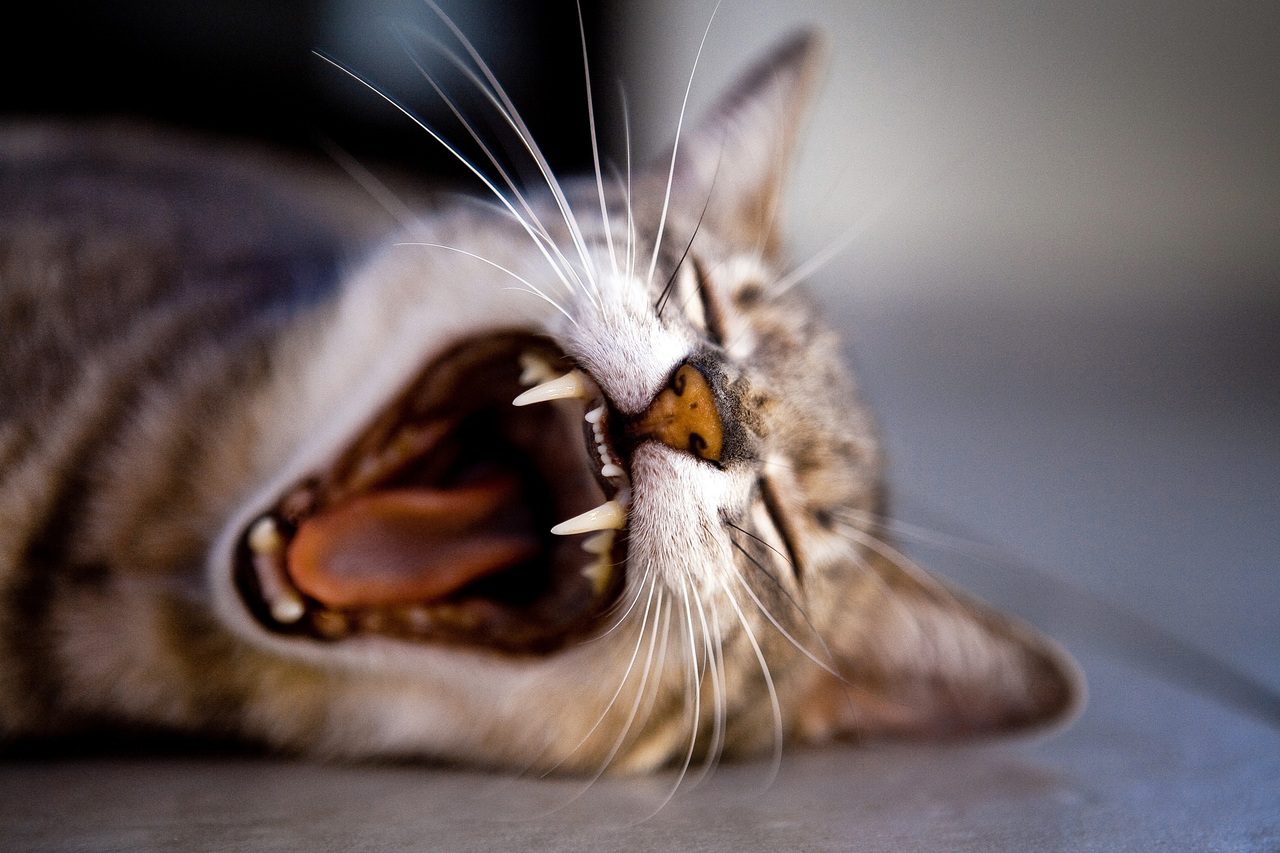The most common question we receive as a veterinary practice is: “Why does my pet have bad breath?” Second only to that question is: “Is it normal for my pet to have bad breath?”
Read on… this is an important topic and we need your help, as a pet owner, to learn how to look after your pet’s teeth.
How do I know when my pet’s “Dog” breath has become a problem?
Gently push back your pet’s lips and check in your pet’s mouth. If you cannot see sufficiently, open their mouth, take a look at the base of their teeth and the state of their gums. Smell the breath and answer these basic questions:
Question 1/ Is the base of their teeth dirty?
If yes, this is tartar build-up that needs to be removed.
Question 2/ Are the gums swollen, puffy, receding or do they bleed easily?
If yes, this is signs of gingivitis which needs to be treated immediately.
Question 3/ Does your pet’s breath smell bad?
If yes, you are smelling infection and pus accumulating around the teeth. Make an appointment for a scale and polish as soon as possible.
If the answer to all the above is “no”, then our pet’s teeth are probably good until their next health check. If you are still worried, or something does not feel, look or smell right (and parents always know best…) The Village Vet will happily do a free check to see if your pet’s teeth need any special attention or not.
Insert: images of plaque and dirty teeth here.
Fun Fact: Adult dogs have 42 teeth and adult cats have 30 teeth.
Does “dog” breath really matter?
Your pet’s teeth are exactly like ours so just imagine not getting your teeth cleaned by a dentist for a few years? Plaque soon builds up on teeth which hardens and becomes tartar (dental calculus). Tartar builds-up on teeth leading to gum inflammation and infection called gingivitis. Gingivitis is the gum infection that you are smelling as “dog breath”.
The existence of gingivitis may lead to other serious conditions such as tooth loss and gum disease, also known as Periodontal Disease.
In addition, bacteria from an infected mouth can enter your animal’s bloodstream via their inflamed gums and affect organs such as their heart or kidneys. This process can cause organ damage and make your pet very sick.
For this reason, your pet will eventually need a dental, scale and polish at the vet just like we get from our own dentist. If they do not receive regular dental health care, the chances of your pet developing Periodontal Disease at some time in their young adult lives is very high. Australian vets have discovered that four out of five dogs and cats over three years of age exhibit some level of dental disease.*

What is Periodontal Disease?
This is when plaque bacteria on the teeth cause gum inflammation. This is the furry ‘scum’ layer that forms on the teeth, starting only hours after you brush them. If plaque is left undisturbed (for example, if you forget to brush your teeth for a couple of days) it hardens into tartar. It is the same process for our pet’s teeth.

Worn Teeth
An additional dental problem your vet will be looking for is excessive wearing down of your pet’s teeth. Pets can be tough on their teeth and worn teeth can cause pain and suffering. Your vet will advise you on how to help your pet in this situation.
Note on Brachycephalic (flat-faced) breeds.
Overcrowding in brachycephalic (flat-faced breeds) or retained baby (milk) teeth can lead to problems such as gum or lip irritation which means they are predisposed to tartar build-up. Keep on-top of their dental health checks and seek help from The Village Vet if you are in any way unsure of your pet’s dental health.
Keep them Clean!
Our best advice is to keep them clean! For ways to manage your pet’s dental at home, read through our article on Home Tips for Pet Dental Care here.
Source
- *Vets Choice Article by Dr Alice Marshall, Registered Veterinarian (NSW VSB)
- MSD Animal Health
- RSPCA, How should I take care of my cat or dogs teeth.
- Greenies
- Hills


